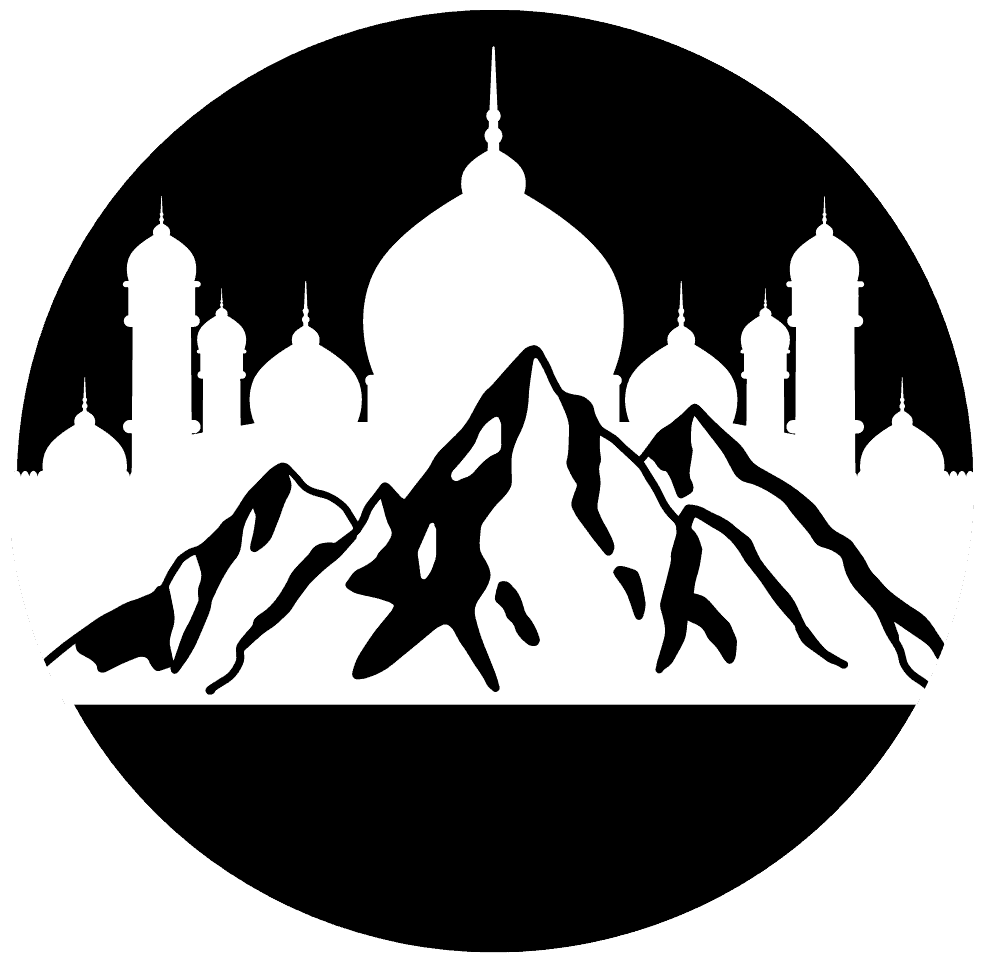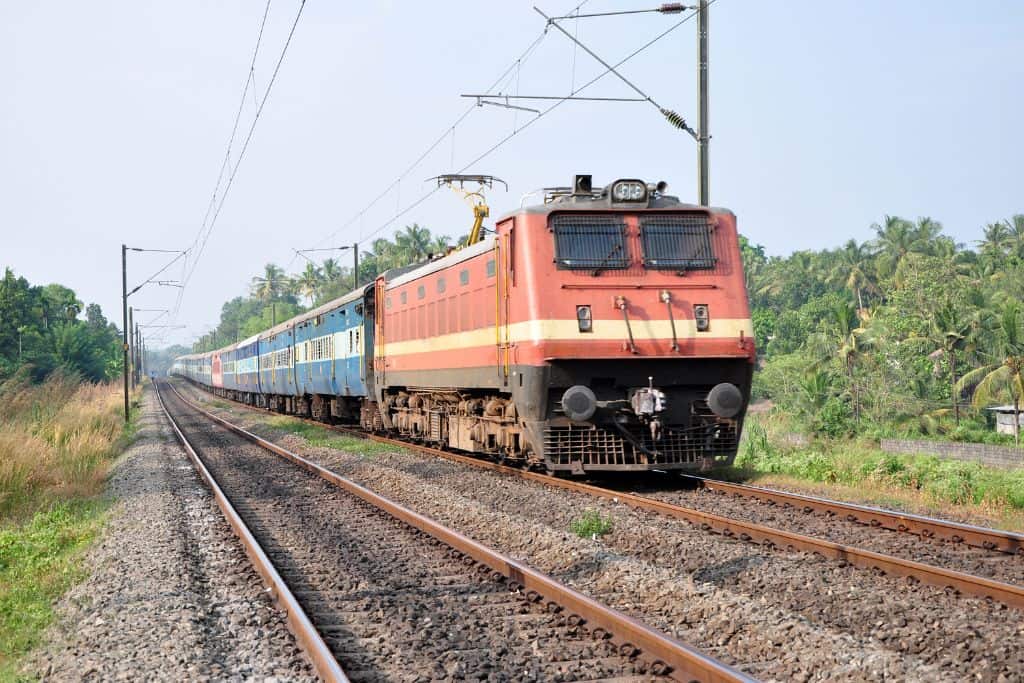India By Train: What To Know About Train Travel In India In 2025
Are you planning to travel India by train? Here’s what you need to know for smooth train travel in India.
Navigating India’s railway system, the variety of trains, ticketing rules, classes, etc. can be tricky for first time travelers. So, here is everything you need to know to ensure that your train journeys in India are smooth.
The first railway line in Asia was opened in 1853 connecting Bombay to the suburb of Thane. It is still in use today. India’s railway network is the 4th largest in the world by track length but the largest by passengers for networks with over 10,000 kms of track, carrying over 20,000 people per route km, 2.5x of China! With over 23 million passengers a day, it connects almost every corner of the country and is the lifeblood of the Indian subcontinent.
In 2024, the Indian Railways continues to expand and modernize, with over 68,000 kilometers of track, 13,000 daily passenger trains, 8,000 daily freight trains and 7,000 stations. It is the most affordable way to travel through the country.
Why You Should Travel By Train In India
Trains in India are a unique experience, literally offering a window into the diverse and mystical Indian countryside. It is something I would absolutely recommend. Most trains in the country are sleeper trains and traverse large distances, offering you a chance to truly experience the diversity of the Indian subcontinent, quickly shifting landscapes, languages, dialects, foods, cultures and customs as you traverse the route. The fastest train journey between Delhi and Mumbai for example, ~1,500 kms / 932 miles apart, takes about 16 hours overnight.
Indian railways offers some of the most luxurious experiences in the world like the Palace on Wheels or the Maharaja Express. It also offers some of the most picturesque train journeys in the world through the Himalayas and the Western Ghats, like the Simla – Kalka route, the Nilgiri railway, Darjeeling Himalayan Railway, the Dudhsagar falls. Finally, short distance express trains like the Vande Bharat or the Shatabdis offer great connectivity to tourist hotspots around major Indian cities.
Growing up in India’s northeast, I spent up to 4 days at a time in a train, on vacations with my family. I fondly remember those trips, how the gentle rocking of the train meant having the best sleep of the year, playing endless games, enjoying the many different types of food along the way and making new friends.
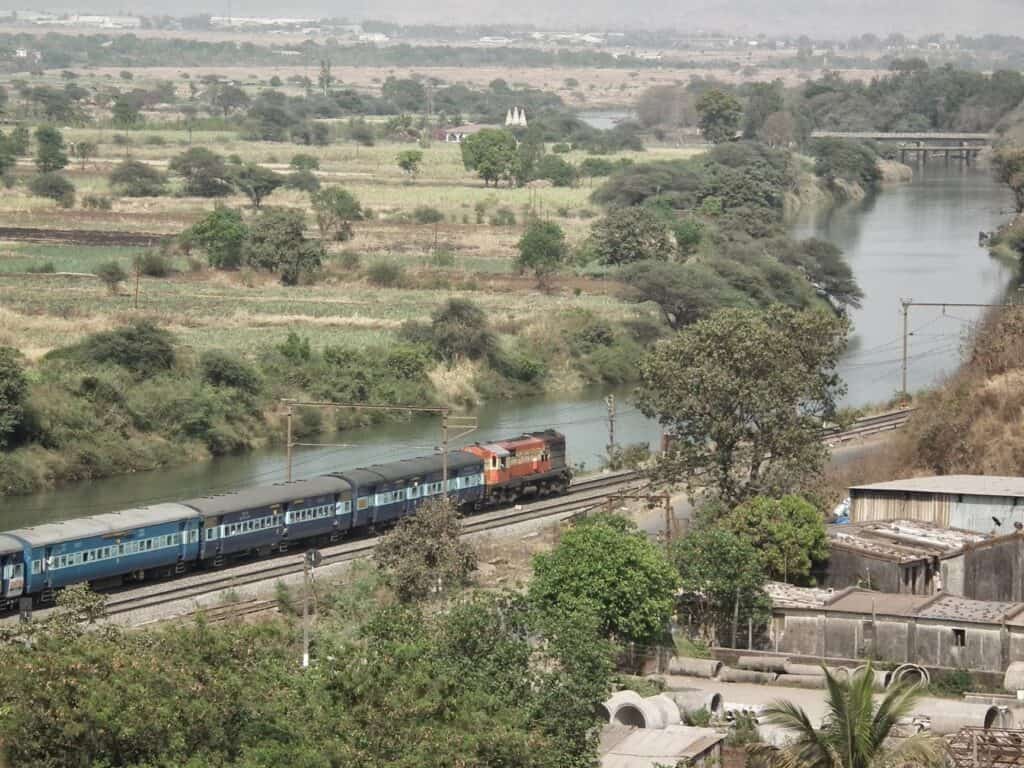
How To Buy Train Tickets In India
Train tickets in India can be bought online through the Indian Railways, official IRCTC eTicketing website, the many travel aggregators or in person at most major train stations in India which have a reservation counter. Some major train stations like New Delhi, Mumbai, Kolkata, Agra and Varanasi have a dedicated International Tourist Bureau, where international tourists can book tickets away from the crowds not uncommon at Indian train stations. For a full list of stations, visit indianrail.gov.in.
Trains in India get booked up weeks in advance. Most train bookings open only 120 days in advance, and some shorter inter-city trains only open bookings 30 days in advance.
However, Indian Railways has many quotas to ensure limited availability for international tourists, last minute travelers, government employees etc. For tourists, the IRCTC Foreign Tourist Quota allows foreigners and Non-Resident Indians (NRIs) to book railway tickets online on irctc.co.in up to 365 days in advance. You need to create an account on the website and verify using a one time password on your international mobile number. All the steps can be found here.
Another extremely helpful quota on Indian trains is the Tatkal or the last-minute quota. While these tickets are marginally more expensive, it is a life saver, especially on busy routes. Tatkal tickets can be booked 24 hours before the journey date. AC Class tickets (CC/2A/3A/3E/EC) can be booked from 10:00 hrs and non-AC Class tickets (FC/SL/2S) can be booked from 11:00 hrs, online at irctc.co.in or at the ticket reservation counters.
Types Of Trains In India
Indian Railways runs over 13,000 passenger trains daily, under a diverse variety of train types. As an international traveler, you’d want to understand this in detail. You do not want to end up on the wrong type of train. That could mean significant delays and unhygienic, extremely crowded conditions with the potential of ruining your trip. Generally, you’d want to have reserved tickets on Mail / Express or Speciality trains. Here is a list of most of the types of trains in India, including ones you’d want to avoid:
Mail or Express trains
Indian railways runs about 3,000 Mail and Express daily and these terms are often interchangeably used in India, with both types of trains with average speed between 40-80 km/hr. These trains could also be called ‘Superfast and have a large proportion of non-AC, unreserved coaches’. In the past, mail trains had exclusive coaches to carry mail for the Indian Postal system. Today, every mail or express train carries mail in their luggage coaches. Thus, train services named before this change continue to be called mail trains.
Long Distance Speciality Express trains
There are many speciality express trains in India, all serving a different purpose, with higher priority given to them over other rail traffic. Here are the most important ones as a tourist:
🚆Rajdhani Express trains
Rajdhani trains connect New Delhi, the national capital (rajdhani) to most major cities across all corners of India. These trains run at speeds of 130-140 kms/hr, are fully air-conditioned, fully reserved, offer free meals / catering and have extremely limited stops. These are the highest speed long distance trains in India.
🚆Sampark Kranti Rajdhani Express trains
These are more economical versions of the Rajdhani express trains with both AC and non-AC coaches, running at speeds of ~110 kms/hr, connecting the national capital to state capitals and major cities.
🚆Duronto Express trains
Duronto trains are basically Rajdhani trains offering the same facilities and running at the same speeds, but connect several Indian state capitals and major metros.
🚆Garib Rath Express trains
Garib Rath trains were started to provide an economical option for high speed, air conditioned rail travel in India. These trains offer one class (3A) of AC sleeper coaches, which have 3 tiers or berths. These trains run at ~130 kms/hr, and do not provide free bedding or meals.
🚆Tejas Express
Tejas Express trains are the first private train in India, started in 2017 between Mumbai and Goa. These trains are run by IRCTC, the catering company associated with Indian Railways. These trains run at ~160 kms/hr, are fully air conditioned and premium, enjoying similar priority as the Rajdhani express trains.
Short – Medium Distance Specialty Express Trains
🚆Shatabdi Express: Shatabdi Express trains are chair car trains that are fully air conditioned, fully reserved, same day high speed trains that run short and medium distances (up to 10 hrs), and make return journeys on the same day. These connect major tourist and business hubs to the metros of India, for eg. Delhi – Agra, Delhi – Amritsar, Mumbai – Pune etc. The trains run at ~140 kms/hr and offer meals.
🚆 Swarn Shatabdi Express: The word ‘Swarn’ means gold and these trains are more luxurious versions of the Shatabdi express, with fully air-conditioned, fully reserved, high speed trains. In addition to the chair cars in regular Shatabdi trains, these trains offer business class style Executive Class (EC) coaches with on-board entertainment.
🚆 Jan Shatabdi Express: The word ‘Jan’ means ‘public’. These trains are more economical versions of the Shatabdi express, with both AC, non-AC coaches and unreserved coaches. Unlike Shatabdis, Jan Shatabdis do not offer free meals but meals can be purchased on board.
🚆 Vande Bharat Express trains: These are the fastest, most modern trains in India, launched in 2018 and adding services rapidly. These trains are more luxurious, chair car only, fully air conditioned trains and aimed at the business / international traveler. They run on medium distance routes, similar to the Shatabdi Express at speeds of upto ~180 kms/hr. Like the Swarn Shatabdi, they offer two classes of travel, the regular AC chair car or the Executive Class. Some routes, like the ones in the Western Ghats, have 360 vista dome coaches offering spectacular views. As an international tourist, I would recommend the Vande Bharat trains as the best option for you in India.
Luxury Trains in India
India offers some of the most luxurious experiences on wheels money can buy. India’s luxury trains offer you unparalleled comfort and a unique way to experience India’s rich hospitality, ancient culture, biodiversity and food.
These trains are luxury hotels on wheels, offering experiences from 3 days to over a week, stopping at many major places of interest along the way, including many UNESCO world heritage sites. Here are the best luxury trains in India:
🚆Maharaja’s Express: Touted as the world’s leading luxury train, this experience transports you back to the times of the Rajas (Kings) and Maharajas (Emperors) of India. The train offers 4 packages ranging from 3N/4D to 6N/7D, starting from Delhi or Mumbai and going through parts of Rajasthan, Uttar Pradesh and Madhya Pradesh covering between 900 and 3000 kms. It costs anywhere between $5,000 to $25,000 for two people.
🚆 Palace on Wheels: Touted as the OG luxury train experience in India, the Palace on Wheels offers a 7N/8D experience from Delhi traversing the tourist hotspots of Rajasthan, a tiger sanctuary and Agra. Prices start at about $6,000 per couple.
🚆 Deccan Odyssey: The Deccan Odyssey trains offer 6 different 7N/8D itineraries / routes that begin from Mumbai or Delhi and depending on the experience you opt for, takes you through parts of Gujarat, Rajasthan, Maharashtra, the Konkan coast and The Deccan Plateau. Prices start at about $6,000 per couple.
🚆 The Golden Chariot: The only luxury train offering in the South of India, the Golden Chariot trains offer three itineraries that traverse Karnataka, Tamil Nadu, Kerala and Goa. The train takes you through the splendor of the many different cultures of South & West India, experiencing their diverse food, architecture, languages and history. This train starts and ends at Bengaluru and offers 3N/4D and 5N/6D packages that are priced beginning USD 3,200 per couple.
Tickets for these trains can only be bought via tour operators and you can use Yatra.com as a trusted source for these tickets.
Mountain Railways in India
India, with its old railway network, that traverses through the mighty Himalayas and the many other mountain ranges across the country, offers some of the most scenic and unique train journeys in the world. Three of these narrow gauge train lines are UNESCO world heritage sites and two more are under consideration. These slow moving, steam engine trains are lovingly called toy trains and are sure to transport you back to different era:
🚆Darjeeling Himalayan Railway: A UNESCO world heritage site, this 88 km journey links the large, connective junction of Siliguri to Darjeeling, a beautiful hill town renowned for its tea. It was completed in 1881 and rises from 100m to about 2300m in elevation.
🚆Shimla – Kalka Railway: Another UNESCO world heritage site, this 95 km long narrow gauge line runs from Kalka, on the outskirts of Chandigarh to Shimla, the capital of the mountainous state Himachal Pradesh and the previous summer capital of British India. This ride is mesmerizing, rising into the Himalayas through 103 tunnels and 864 bridges.
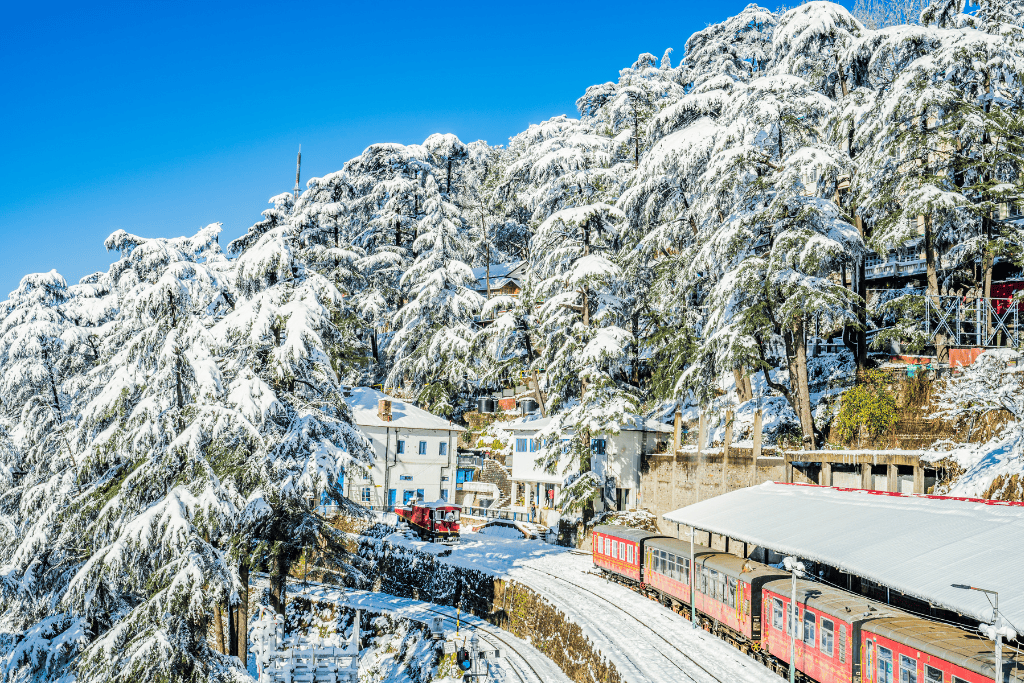
🚆Nilgiri Mountain Railway: Popularly known as the Blue Mountains, the Nilgiri mountains are a spectacular mountain range in Southern India. A UNESCO world heritage site, this short 46 km meter gauge train line has 208 curves, 16 tunnels, 250 bridges and a steep incline. It connects Mettupalayam to Ooty in Tamil Nadu. The uphill journey takes almost 5 hours and the downhill journey takes an hour lesser, but the scenery is well worth the time spent. This journey is even more spectacular during the monsoons.
🚆Matheran Hill Railway: Matheran, about 100 kms from Mumbai, is one of the only car free towns in the country. To get here, you either have to climb about 13 kms or use horseback or take a 21 km train journey from Neral up to Matheran. In the dramatically rising rock faces of the Western Ghats, this journey offers some steep curves and mesmerizing views over an hour or so.
🚆Kangra Valley Railway: This 163 km narrow gauge line runs through the picturesque Kangra valley in Himachal Pradesh. It runs between Pathankot and Joginder Nagar in the lower Himalayas of Himachal Pradesh with the highest point being about 1200m.
Passenger or Suburban trains
As an international traveler, you typically want to avoid these trains, especially for long distances. About 7,000 passenger trains in India that are not mail or express trains are classified as passenger trains. Passenger trains are slow trains that stop at every station, with large unreserved capacity (general compartments). Passenger trains that operate for less than 150 kms, usually around major cities are suburban or local trains.
The largest local train network in India is the Mumbai suburban rail network, which is the lifeline of the metropolis, spread across 3 lines, operating over 2,400 services and carrying over 7.5 million passengers daily.
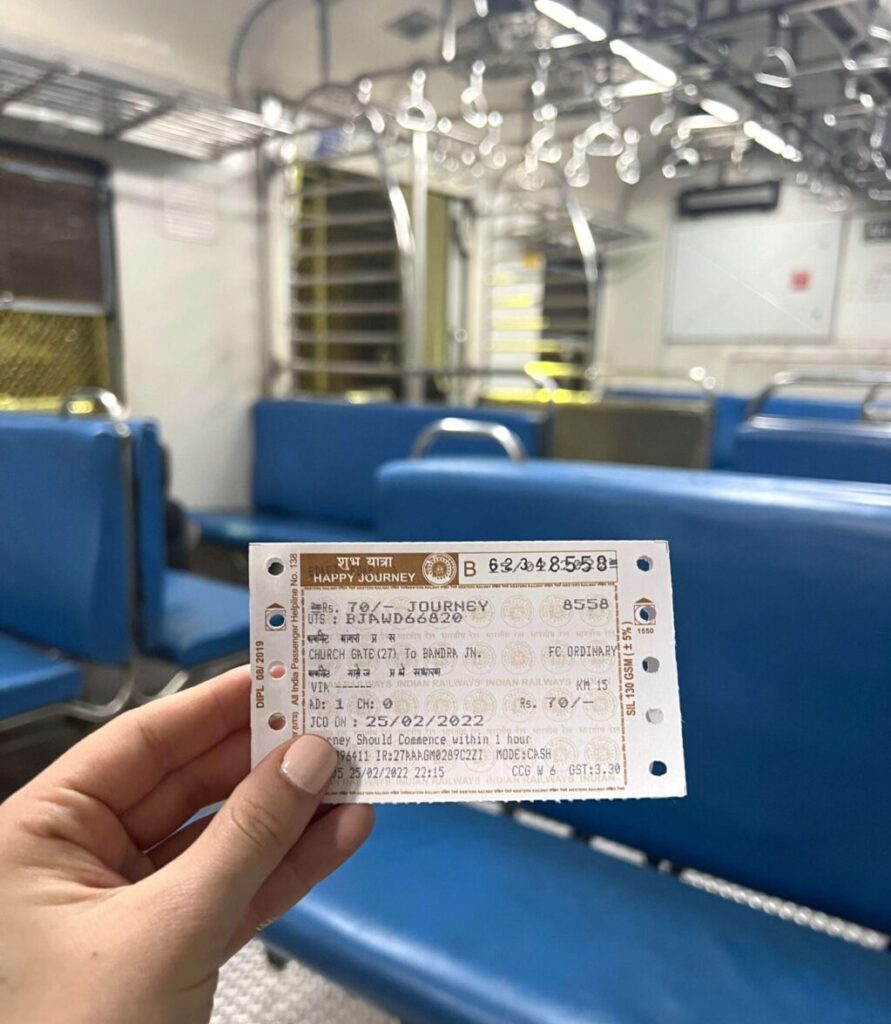
Metro / Subway trains
These aren’t run by the Indian railways but many major Indian cities have operational, state of the art local metro rail services. Delhi has the largest, most extensive metro network while the metro networks of cities like Mumbai, Chennai, Bangalore / Bengaluru, Ahmedabad, Pune, Jaipur, Kanpur and Agra are still ramping up, with a few lines open.
While there are some other types of trains like intercity trains and AC superfasts, the trains above should cover the range of options for a tourist in India.
Best Trains For A Tourist In India
As a tourist, your best options for short to medium distance train journeys are the Vande Bharat or Shatabdi trains.
For long distance / overnight journeys, when feasible, the Rajdhani, Duronto and Tejas Express trains would be the most preferred options.
The many luxury trains also offer a unique experience for a traveler in India.
Train Classes In India
Indian trains, depending on the type of train, offer many classes. Below is a list:
First AC (1A)
These comprise fully air conditioned, lockable private cabins, of 2-4 berths in each cabin with carpeted floors. The berths are wider than other classes and the bedding provided is of a higher quality. These coaches also have cleaner bathrooms and showers in some coaches. If comfort and cleanliness is your priority, choose First AC. Fares are comparable to flying though, making this option less practical.
Second AC (2A)
This is the second highest class of travel on long distance trains in India, with the coaches having an open-plan setup, 2 sleeper berths on each side with privacy curtains, bedding and reading lamps.
Third AC (3A)
This is the third highest class of travel on long distance trains in India, with the coaches having an open-plan setup, 3 sleeper berths on each side with privacy curtains, bedding and reading lamps. This is slightly more cramped than the 2A class.
Sleeper Class (SL)
Sleeper Class are reserved, non-AC coaches, that form about 80% of a mail or express train. The width of the berths also tend to be smaller than first, second and third AC coaches. Also, no bedding is provided and generally, the toilets and level of cleanliness in these coaches is poor.
AC Chair Car (CC)
These are fully air-conditioned, chair car coaches on short to medium distance trains like the Shatabdi / Vande Bharat trains, usually offering meals.
Executive Class (EC)
These are fully air-conditioned, chair car coaches that provide business class style seats along with on-board entertainment and connectivity on short to medium distance trains like the Shatabdi / Vande Bharat trains, usually offering meals.
Second Class on Jan Shatabdi (2S)
These are non-AC, chair car coaches on short to medium distance Jan Shatabdi trains. This class does not offer meals.
General Unreserved Class (UR)
These are the unreserved coaches that are on most mail, express and passenger trains in India. They simply require a general, unreserved ticket. Some routes can have general coaches that are the most crowded places on the planet, with people sitting in the passages and anywhere they can find space. A huge part of India’s large rural / semi-urban working class relies on this type of travel. As an international traveler, I would recommend avoiding this at all costs.
Booking Status For Train Tickets In India
Available (AVL)
When booking a ticket online, you’ll be able to see how many seats are available on a particular train / class.
Confirmed (CNF)
This is simply a fully reserved ticket, which means that you’ll have an allotted seat etc. Keep in mind that tickets booked under the foreign traveler quota will only be assigned seats 120 days before the journey, even if the ticket is confirmed when bought before that time period.
Reservation Against Cancellation (RAC)
Due to the amount of people that rely on the railways to get around the country, this unique system allows non-confirmed passengers to have a reserved seat on Indian trains. The RAC system guarantees a seat, usually as a shared berth with another person, but does not guarantee a berth. All RAC tickets will also have a number with the status that tells you your spot in the queue. For eg. RAC 1 means you are going to be first in line if a cancelation or quota release occurs in your class of travel.
Most RAC tickets get confirmed on the day of the journey as many reserved quota seats that are held by the Indian railways on all trains are released on the day of or the day before the journey. So, you can usually book an RAC ticket and expect it to be confirmed. However, this isn’t always the case and I have once spent 32 hours on a train sharing a berth with someone else who also had an RAC ticket.
Waitlist (WL)
As the term suggests, this status refers to a non-confirmed ticket and with this status, you are not allowed to board a reserved coach. If you’ve booked an e-ticket the railways will automatically cancel and refund you the ticket amount if the ticket isn’t confirmed on the day of the journey, when the ticketing chart for the train is prepared (about 4-8 hrs before the journey). There are different types of waitlists on Indian trains though:
GNWL
This is the most common general category waitlist, one that doesn’t fall under any of the other quota categories. This type offers the best chance of your ticket becoming confirmed as it has the most seats released to this category.
CKWL
This category of waitlist is for Tatkal category tickets. Since this waitlist is generated only 24 hours before the journey, under the tatkal quota (see above), it is highly unlikely that this category will get confirmed on the day.
There are other types of waitlists which include Roadside Waitlist (RSWL), Pooled Quota Waitlist (PQWL), Remote Location Waitlist (RLWL) and Request Waitlist but these are unlikely to apply to you as a tourist in the country.
Buying Indian Train Tickets Online
Growing up, the only way to ensure you had a train ticket was being in the ticketing line, at your nearest ticket reservation counter, nice and early, 60 days before the day of the journey, which is when tickets used to open back in the day (120 days now). I’ve been in those long lines many times. The other option was to catch hold of a tout who stands in line for you for a commission.
As the railways website ramped up through the 2000s and 2010s and started offering online ticket bookings, the website was slow and would crash every morning during the tatkal rush hour. Moreover, there were no other options apart from the two above.
Luckily, today booking train tickets in India is much easier, with many travel aggregators also offering train ticket bookings. Here’s how:
IRCTC
www.irctc.co.in is the official ticketing website of the Indian Railways. You can easily create an account and book tickets, like you would on any travel website. The account requires mobile number OTP verification and the verification can be done on your international number. One thing to keep in mind is that it isn’t easy to change that registered number, in case you plan to use an Indian number on your trip.
12go
Similar to Indian aggregators, 12go.asia has a system that shows fares & availability in real time, sourced directly from IRCTC’s system. You select your train & class and click to buy. Tickets are then manually secured by 12go staff using IRCTC’s business-to-business booking system.
An advantage of using 12go is that you can choose to pay in different currencies and easily pay with your international card, something that could be challenging on some Indian websites and the IRCTC website itself. You can choose between Indian Rupees, USD, GBP, Euros & several other currencies.
You’ll be emailed an e-ticket, the same official IRCTC e-ticket that you’d get if you booked directly. You print this out and can board the train, you show the e-ticket and your passport to the conductor.
MakeMyTrip
Widely considered India’s best travel aggregator, MakeMyTrip offers an easy option, on a better designed website / user experience. When waitlisted / RAC MakeMyTrip also offers guaranteed confirmations on some trains.
Another leading Indian travel aggregator offering a similar experience as MakeMyTrip is Yatra.com.
Buying Indian Train Tickets In Person
You can also head to the nearest Ticket Reservation Counter at a physical train station in India. Most train stations in India have ticket /railway reservation counters that are usually open between 8am – 8pm Monday – Saturday and 8am – 2pm on Sundays.
The counters accept cash, cards or UPI payments via the many UPI apps like Google Pay, PayTM, PhonePe etc. There will be touts who will try to sell you, especially as an international traveler. Beware of them and avoid them as far as possible.
Some major train stations like New Delhi, Mumbai CSTM, Mumbai Churchgate, Sealdah Kolkata, Agra and Varanasi have a dedicated International Tourist Bureau, where international tourists can book tickets away from the crowds not uncommon at Indian train stations. For a full list of stations, visit indianrail.gov.in.
Tips For Train Travel In India
As an international tourist, to avoid any hassles, please ensure you are traveling with a confirmed, reserved ticket and ideally on one of the specialty trains.
Due to the distances and slower speeds of Indian trains along with cheap air travel in India, it is often hard to beat the ease and convenience of air travel in India. However, trains are a great option for short to medium distances, from major cities to smaller towns with lesser air connectivity. Trains are also great options for overnight journeys, offering you sleeper berths and helping you save precious time and hotel fare.
As mentioned earlier, your best options for short to medium distance train journeys are the Vande Bharat or Shatabdi trains. For long distance / overnight journeys, when feasible, the Rajdhani, Duronto and Tejas Express trains would be the most preferred options. The many luxury trains also offer a unique experience for a traveler in India.
Some other things to keep in mind when traveling by trains in India as an international tourist are:
✅ Keep valuables secure
Goes without saying, keep your stuff safe. Many Indian train stations have stores and hawkers that sell chains and locks to be able to secure your luggage under berths. Indian trains offer chains you can tie your luggage to. Keep your personal items and passport with you on your berth / seat when sleeping.
✅ Be open to a chat with the locals
Indian trains, like Indian homes, are all about having a chat. On long distance and local trains, you’ll see many people playing cards on a sheet, engaging in conversation and sharing food. It is a great way to strike up conversations with locals from many parts of the country. The locals will generally be extremely helpful and hospitable.
✅ Enjoy the food but be wise
If you’re on the long distance trains, Indian train stations and trains will offer you many varieties of food from this massive and diverse subcontinent. However, be mindful of what you eat as an upset stomach will make your long journey extremely uncomfortable. Generally speaking, stick to foods that are hot and made fresh and avoid unbottled water.
✅ Carry snacks
Food on Indian trains is extremely local and Indian. On a long journey, for your own comfort you should carry snacks to make sure you have some food in case you don’t like the food on the train or along the journey.
✅ Expect delays
You should usually be on time on specialty trains. However, due to track conditions, excessive passenger load and weather, there could be delays. Usually, there are weather related travel delays due to excessive smog in the winter, especially in the months of Dec – Feb all across North India.
✅ Download Offline Maps
India is a large country and the railways connect many remote parts of the country. Some areas have poor cellular coverage and to have your bearings at all times, downloading offline maps might be a good idea.
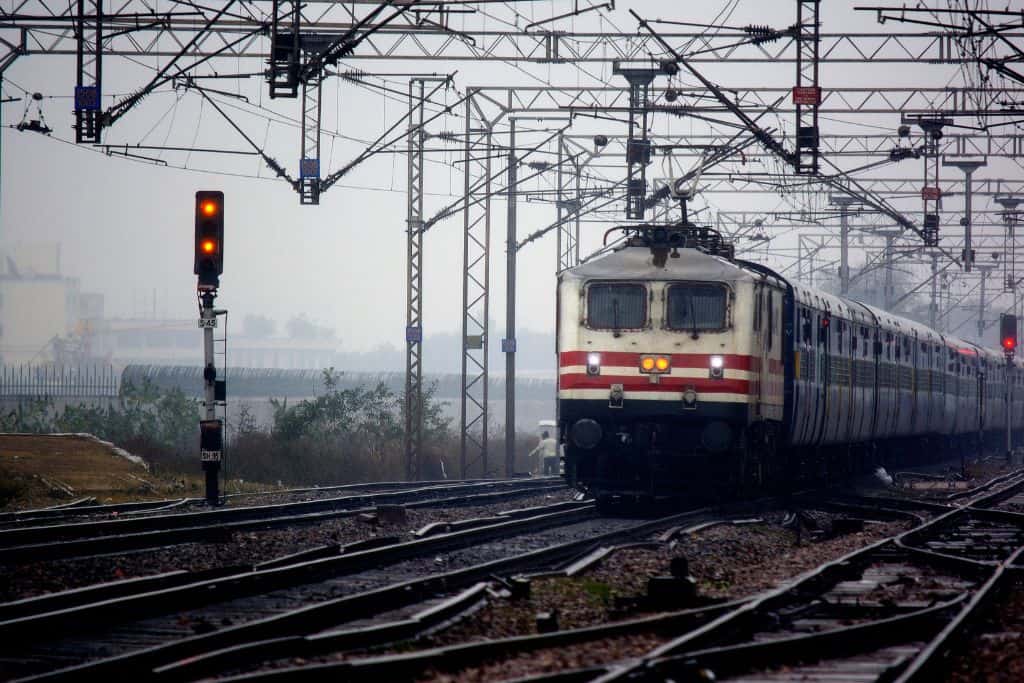
TLDR: What To Know About Train Travel In India
Trains in India are the lifeblood of the Indian economy, carrying millions of passengers, mail and tons of freight across the country. Until very recently, India had a separate Railway budget and still has a dedicated Central Government Railway Ministry.
The offerings on Indian Railways range from really cheap, crowded coaches to business class style modern coaches and also some of the most luxurious experiences on wheels. Traveling by train in India is truly a unique experience, but there are certain things to keep in mind as the system is very unique to India.
